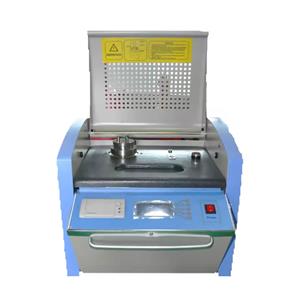insulating oil dielectric loss tester
-
Insulating Oil Dielectric Dissipation Factor Tester
The Insulating Oil Dielectric Dissipation Factor Tester is a user-friendly, all-digital device for measuring dielectric loss and DC resistivity in insulating oils. Its integrated design and smart features allow for easy.
Insulating Oil Dielectric Loss Tester Dielectric Dissipation Factor Test Set Insulating Oil Dissipation Factor Dielectric Loss Testing Equipment For Insulating OilEmail Details
-
2708-2024
Analysis on the Causes of Exceeding the Standard Dielectric Loss of Transformer Oil
Dielectric loss refers to the sum of polarization loss and conductivity loss caused by transformer oil under the action of alternating electric field. Dielectric loss factor can reflect the insulation characteristics of transformer, the aging degree of transformer oil under the action of electric field, oxidation and high temperature, and the degree of pollution of polar impurities transformer and charged colloid in oil.
-
2402-2023
How to Measure the Dielectric Loss of Circuit-breaker Capacitor at High Voltage
Measurement of capacitance and dielectric loss of circuit-breaker capacitor is a very important task to ensure safe and stable running of circuit-breaker. However, due to serious electric interference to on-site measurement, dielectric losses of more and more 500kV circuit-breaker capacitor exceeded the limit at 10kV test voltage according to the CSG trial standard. To address the above-mentioned problems, the paper proposes that methods of using different frequency power source and boosting test voltage be utilized to measure the capacitance and dielectric loss. Based on the above measuring methods, several common test schemes are put forward and application ranges are also analyzed followed by capacitance and dielectric loss measurement for some 500kV circuit-breaker capacitor at substation. Test results indicate that the dielectric loss of capacitor reduces as the voltage rises; the change in test voltage frequency can effectively shield the interference from on-site electric field.





